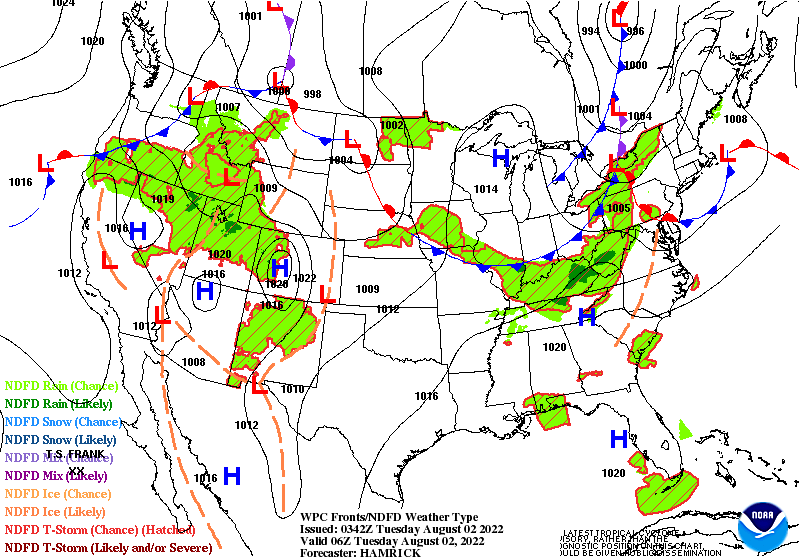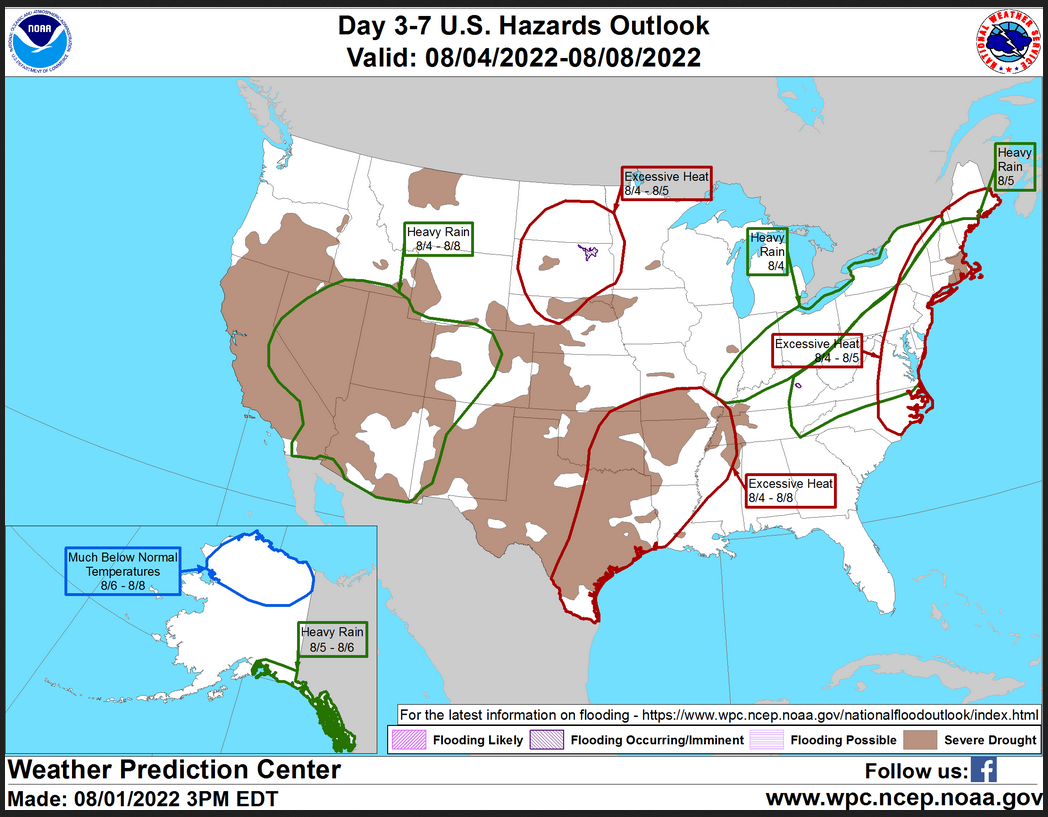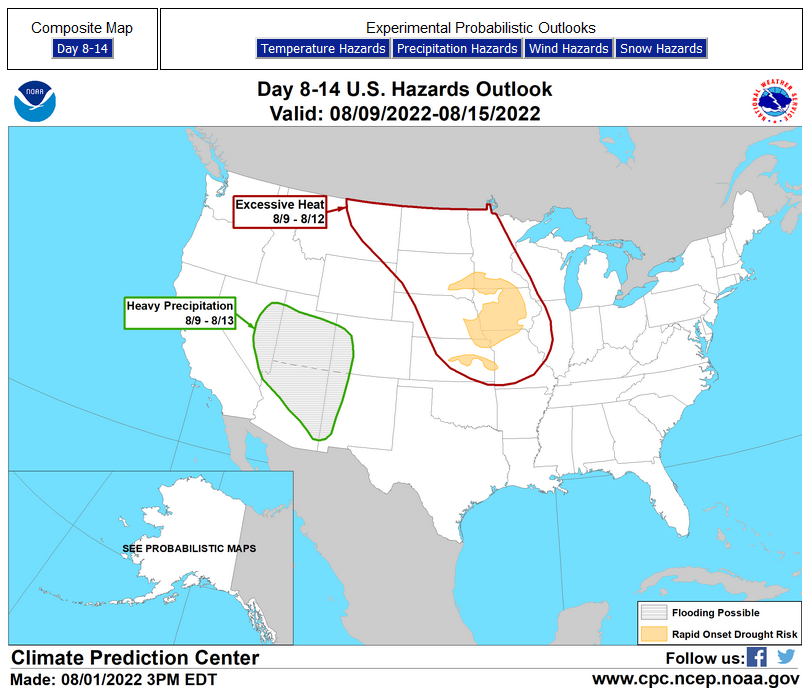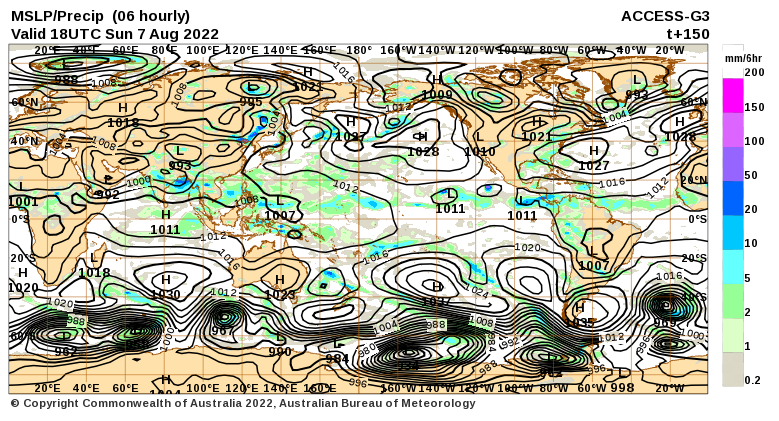Here is what we are paying attention to this evening and the next 48 hours from this evening’s NWS Forecast.
...Heavy Rains and Flash Flooding possible across the Central Appalachians... ...Monsoonal Rains to continue across much of the Southwest U.S., posing a Flash Flood risk... ...Some Relief from Record High Temperatures across the Northwest... ...Fire Weather Threat to continue from the Northwest into the Northern High Plains..
Continuation of the NWS Short Range Forecast (It is updated twice a day and these updates can be found here.
A cold front dropping southeastward through the Ohio Valley and toward the Central Appalachians will be the focus for additional heavy precipitation tonight into the early hours of Tuesday across large portions of Kentucky into West Virginia. These areas have seen very heavy rainfall amounts over the past week, with additional rains bringing the potential for additional life-threatening flash flooding. Additional showers and thunderstorms are again possible Tuesday afternoon into Tuesday night across these regions, although precip totals are not expected to be as heavy as during Monday afternoon to Monday night. There is not expected to be any significant changes to the recent active monsoonal weather pattern across large portions of the Southwestern U.S. Above average moisture values are forecast to continue to stream northward across the Southwest, California, the Great Basin and into the Northern Rockies, supporting the potential for widespread scattered showers and thunderstorms. These monsoonal rains will continue to pose a flash flood threat, especially across burn scars, dry creek beds and slot canyon areas. Some relief in sight for areas of the Northwestern U.S. that have seen numerous days of record high temperatures. Monday appears that it will be the last day of potentially record high temperatures for area of the Northwestern U.S. as a cold front moving inland from the eastern Pacific brings in cooler temperatures for Tuesday and Wednesday. The combination of the recent record highs and dry conditions over the Northwestern U.S. has increased the fire weather threat. While cooler temperatures may be in store for Tuesday and Wednesday, the continued lack of significant rains will keep the fire weather threat going from portions of the Pacific Northwest, Northern Rockies and into the Northern High Plains. The core of the heat over the next few days will be centered across the middle section of the nation. High temperatures are expected to again be over 100 degrees on Tuesday across large portions of the Northern, Central and Southern Plains, with the greatest above average temperatures expected across Kansas, Nebraska, South Dakota, Iowa, Minnesota and southern North Dakota. Slightly cooler temperatures expected across the Northern to Central Plains on Wednesday, but this will be short lived as more very hot temperatures expected toward the end of the work week across these areas. Cooler than average temperatures are expected to persist across the Southwest and the Great Basin over the next two days where the active monsoonal precipitation pattern will support cloudy and wet conditions.
Maps that relate the forecast to geography can be found by clicking Here for Day 1 and Here for Day 2.
Here is a 60-hour animated forecast map that shows how the short-term forecast is expected to play out.
If it needs to be updated click here.
HAZARDS OUTLOOKS
Click here for the latest complete Day 3 -7 Hazards forecast which updates only on weekdays. Once a week probably Monday or Tuesday I will update the images. I provided the link for readers to get daily updates on weekdays. Use your own judgment to decide if you need to update these images.
Worldwide Tropical Forecast
(This graphic updates on Tuesdays) If it has not been updated, you can get the update by clicking he re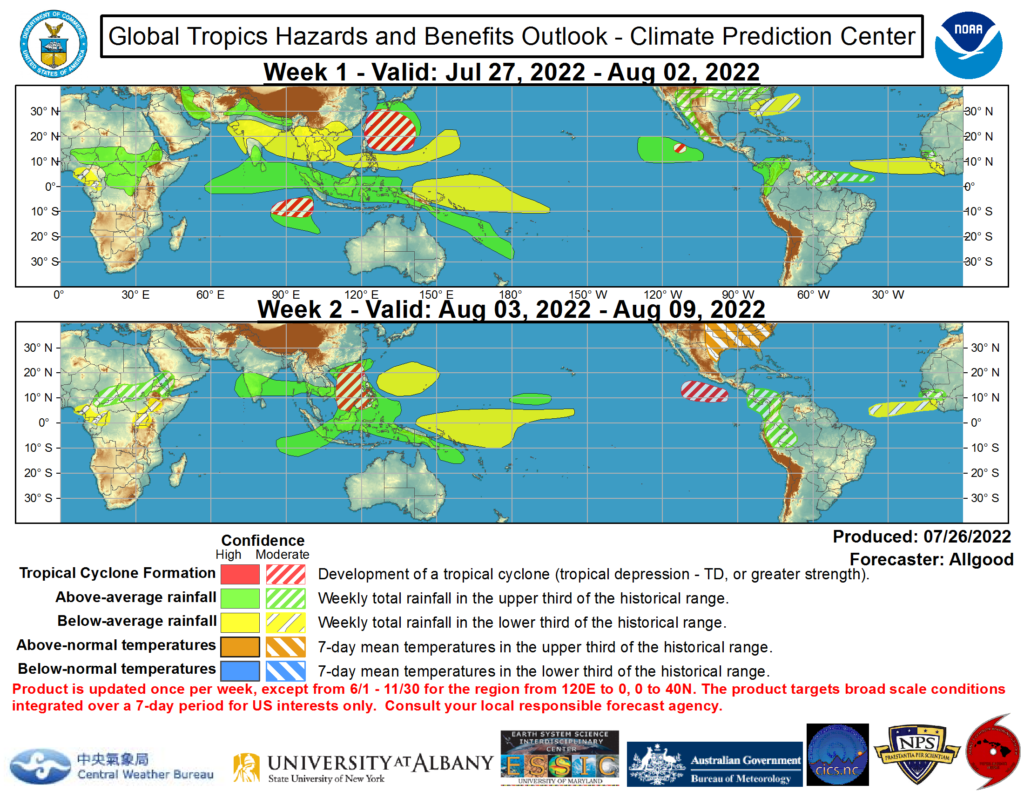
Detailed Maps and Reports for the Western Atlantic and the Pacific Oceans
Below are three maps that summarize the situation for the Atlantic, Eastern and Central Pacific. Additional information can be accessed by clicking HERE
First the Atlantic
Click to view the forecast map and have access to additional information https://www.nhc.noaa.gov/gtwo.php?basin=atlc&fdays=5
Then Eastern Pacific
Click to view the forecast map and have access to additional information https://www.nhc.noaa.gov/gtwo.php?basin=epac&fdays=5
Then Central Pacific
Click to view the forecast map and have access to additional information https://www.nhc.noaa.gov/gtwo.php?basin=cpac&fdays=5
And the Western Pacific
Click to view the forecast map and have access to additional information https://www.metoc.navy.mil/jtwc/jtwc.html
Some Intermediate-Term Outlooks
Links to “Outlook” maps and discussions for three time periods. Days 6 – 10, Days 8 – 14, and Weeks 3 and 4. An outlook differs from a forecast based on how NOAA uses these terms in that an “outlook” presents information from deviation from normal and the likelihood of these deviations.
You have to click on the links because they do not update automatically and I do not want to have stale images in the article. But it is not difficult to click on a link and you get a large image plus a discussion. On Fridays in a separate article, we will show the images and provide a link in this article that article. But remember what you will see is the images as of Friday. But here you can get the current images simply by clicking on them. Then hit the return arrow at the upper left of your screen to return to the article. You will not find this information easily anywhere else.
Right now you can find these maps here (We show them every Friday there but you can click above and find them).
Forecast for Day 6 (Currently Set for Day 6 but the reader can change that)
World Weather Forecast produced by the Australian Bureau of Meteorology. Unfortunately, I do not know how to extract the control panel and embed it into my report so that you could use the tool within my report. But if you visit it Click Here and you will be able to use the tool to view temperature or many other things for THE WORLD. It can forecast out for a week. Pretty cool. Return to this report by using the “Back Arrow” usually found top left corner of your screen to the left of the URL Box. It may require hitting it a few times depending on how deep you are into the BOM tool. Below are the current worldwide precipitation and air pressure forecasts for six days out. They will not auto-update and right now are current for Day 6. If you want the forecast for a different day Click Here I will try to update this map each day but you have the link so you can access the dashboard and get a wide variety of forecasts.
I mostly rely on the reader to interpret world maps. For this map, areas of expected precipitation for the date and time shown are clearly shown.
The number of High-Pressure systems shown is called the Wave Number. Maybe I will discuss WN someday. But it shows how many Rossby Waves there are around the World. Sometimes they are hard to count. Counting Low-Pressure systems should provide the same WN. Rossby Waves are the way the temperature distribution of the Planet remains in balance. It is basically the science of fluid dynamics. It can be very helpful in predicting the movement of weather patterns.
Month to Date Information
Month to date Temperature can be found at https://hprcc.unl.edu/products/maps/acis/MonthTDeptUS.png
Month to date Precipitation can be found at https://hprcc.unl.e d u/products/maps/acis/MonthPNormUS.png

